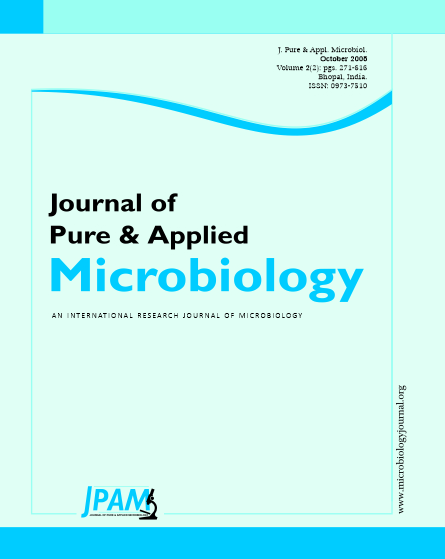Surface soils (0-15cm) from upland and mudflat land situations of five different locations of the Sunderbans, India were tested for their aerobic heterotrophic diazotrophic populations and dinitrogen fixation. Culturable diazotrophic populations in the upland soils, irrespective of locations and NaCl concentrations in the culture media, were statistically greater than that of the mudflat soils. The diazotrophic counts as well as nitrogen fixation of the soils were the highest with extraneous addition of 1 % NaCl in the media and then gradually decreased with further increase in salt concentration in the culture media. Out of the 12 isolates, 7 were Gram (-ve), 4 were spore formers and all could form capsules. The isolates could utilize glucose, sucrose, mannitol, citrate and starch. They were catalase and gelatinase positive but indole negative. The ARA of the isolates ranged from 14.87 to 174.47 nmole C2H4 produced ml-1 culture media without NaCl in 72 hours. The isolates could fix 3.61 to 5.44 mg N2 g-1 sugar consumed in culture media without NaCl. The isolates from the mudflat soils showed greater degree of salt tolerance than the upland soils as determined by O.D of the cultures. 16S rDNA sequences of the 8 out of 12 bacterial isolates were similar to the genera: Agrobacterium, Klebsiella, Pseudomonas, Bacillus and Vibrio. Two isolates were identified as Bacterium VNS3-1-2 and Bacterium Antarctica 14 while the other two could not be unidentified.
Salinity, diazotrophs, dinitrogen fixation, Sunderbans, DNA sequencing
© The Author(s) 2008. Open Access. This article is distributed under the terms of the Creative Commons Attribution 4.0 International License which permits unrestricted use, sharing, distribution, and reproduction in any medium, provided you give appropriate credit to the original author(s) and the source, provide a link to the Creative Commons license, and indicate if changes were made.


